Craftsmanship from Mie, Locally Rich in History Products
It is celebrated for its Banko pottery, while the sturgeons raised in the region and its original vinegars make it a gourmet's paradise.
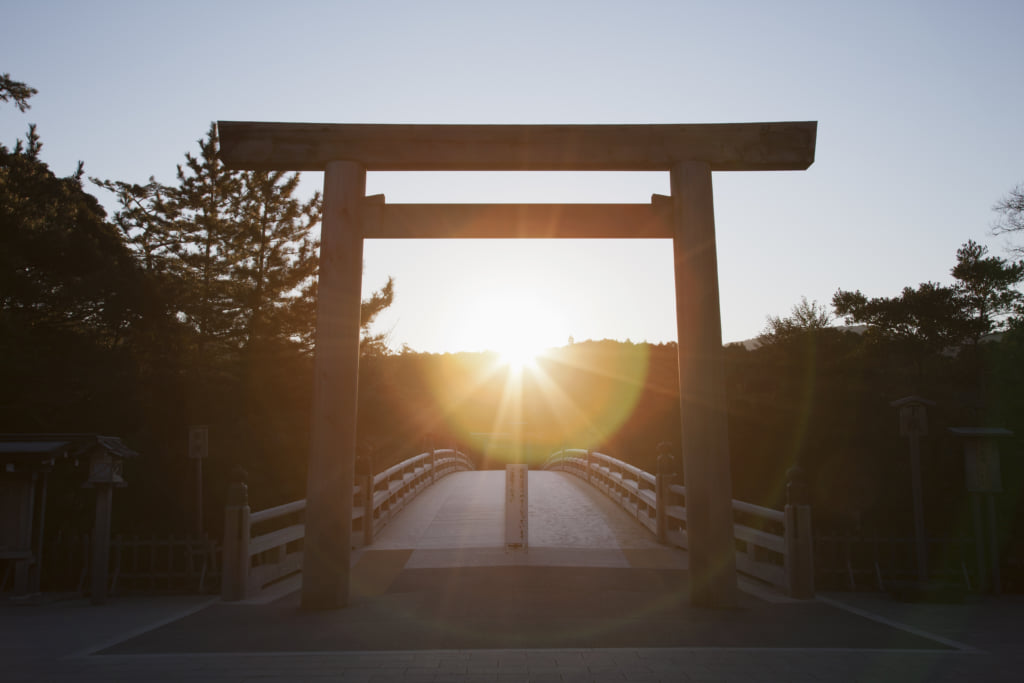
The Ise Shrine (Ise-jingu) consists of the Inner Shrine (Naigu), dedicated to the sun goddess Amaterasu, and the Outer Shrine (Gegu), dedicated to Toyoke, the goddess of food, and includes 125 shrines. It is officially known as Ise-jingu, rather than jinja, to signify its connection with the Japanese imperial family.
Just southwest of Nagoya, the main city in the central region of Japan, lies Mie Prefecture. More accessible than Osaka, it’s a region where travelers have long come and gone, typically for pilgrimages to the Ise Shrine. The pilgrimage to the Ise Shrine, affectionately called ‘Mr. Ise’ (O-Ise-san), was popular across the country during the Edo period (1603-1868). It’s said that during peak years, over 4 million people would visit the shrine. Today, the tradition of pilgrimage to Ise is passed down from generation to generation.
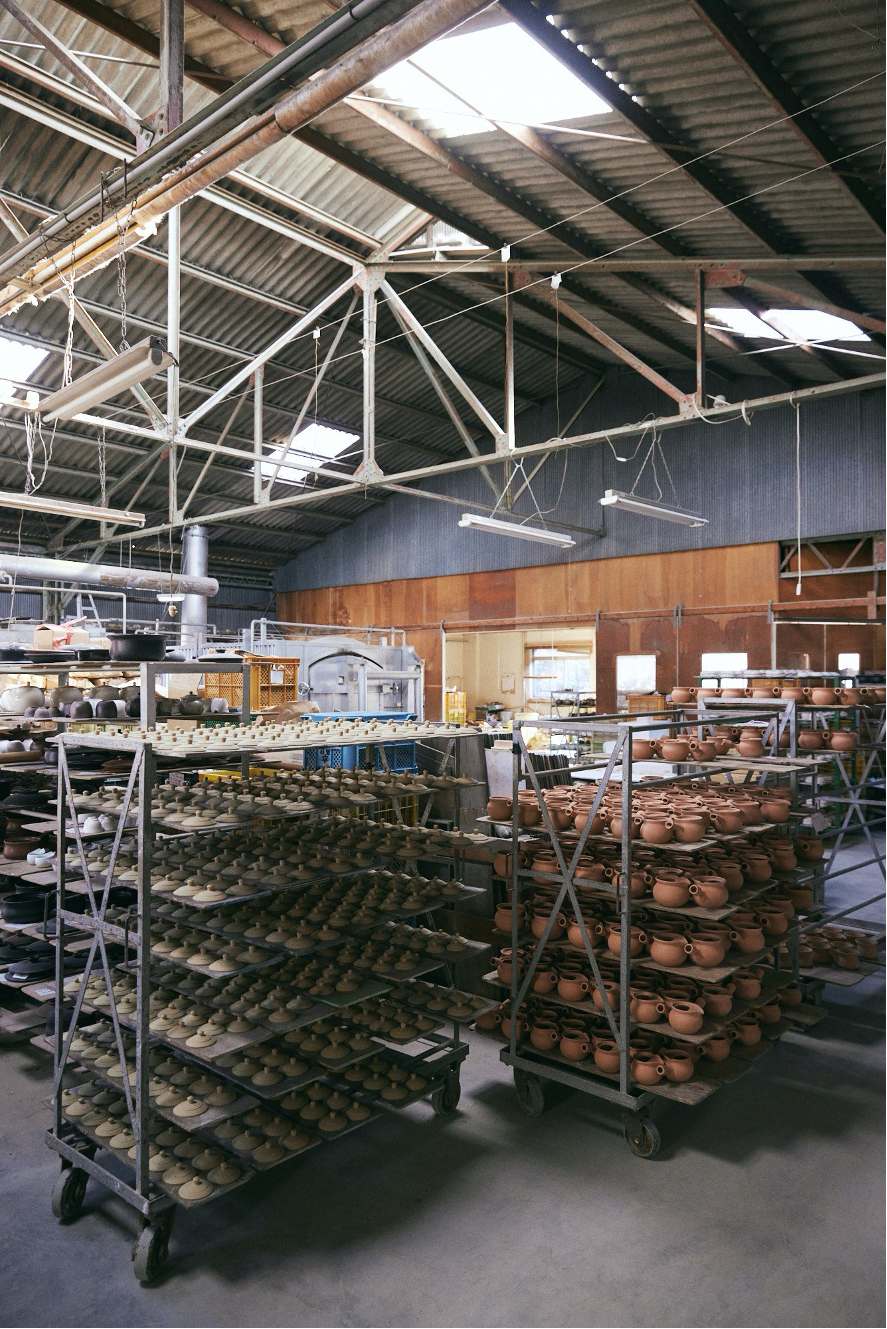
Ceramics in the midst of production are neatly arranged at the Fujiso workshop. Founded in 1907, it initially produced various utensils such as hibachi (traditional Japanese heating devices similar to braziers) in pottery. Later, the workshop specialized in Japanese tableware production. Today, nearly 500 different items are produced there, especially teapots.
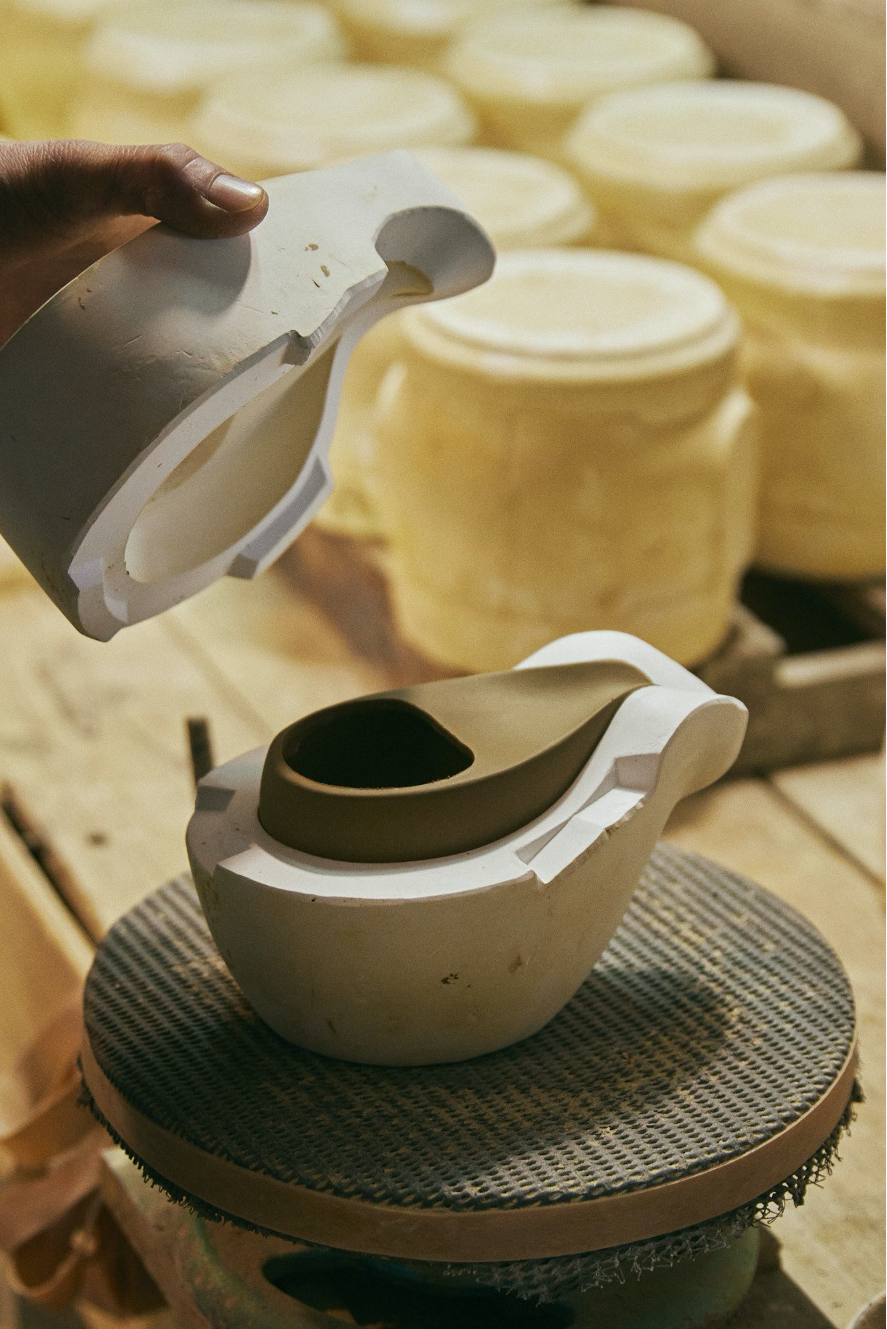
The original teapot ‘Hitoshizuku’ is obtained from a mold filled manually with clay. It was the fourth-generation potter Kenji Fujii who came up with the idea, with an obsession for the quality of the spout, ease of handling, and various innovative details. While preserving the manufacturing methods of Banko ware, passed down through generations, he tried to design a product that would break the mold.
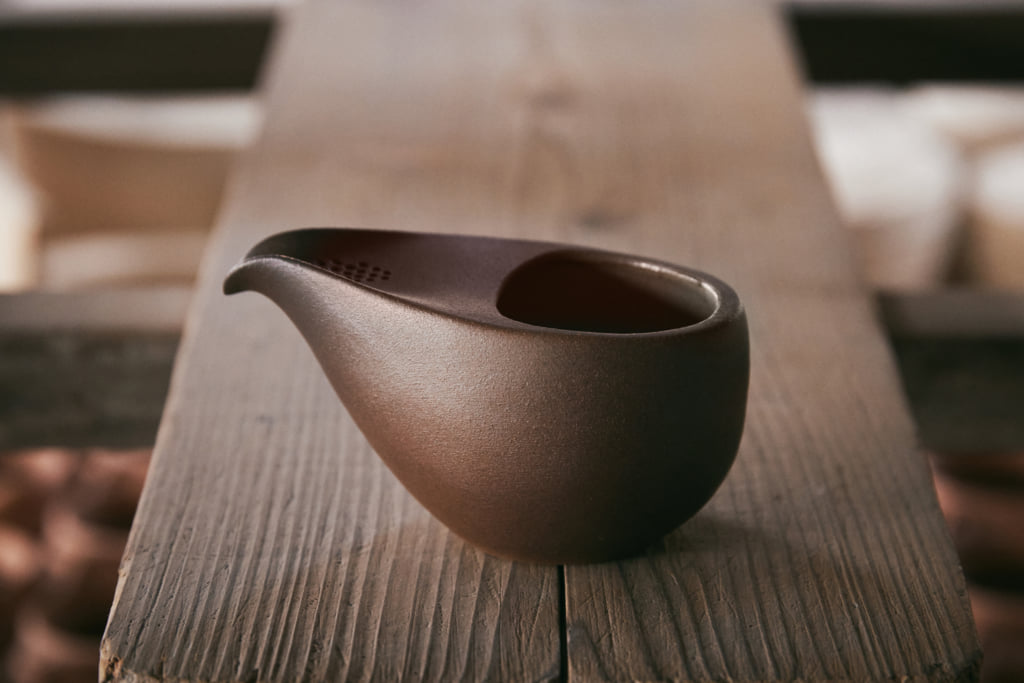
The Hitoshizuku teapot is born from the handle-less Japanese teapot hobin. It is not only used for brewing tea but can also be used to serve sake.
Mie Prefecture, scattered with historical sites such as the Ise Shrine, the Kumano Kodo pilgrimage, and the former Iga region (now in the western part of the prefecture) known for its ninja village, is also renowned for its excellent local products.
For example, Banko pottery from Yokkaichi represents 80% of all donabe earthenware produced in the country, with this city being the nation’s top producer. Yokkaichi Banko pottery is also one of those suitable for preparing Sencha green tea. The Fujiso pottery workshop, which has been in operation for over a hundred years, not only produces ceramics in traditional styles but also teapots with modern designs without handles or lids.
Elsewhere in the prefecture, other traditional industries have been carefully preserved and passed down through generations, such as Matsusaka cotton or Iga braided cords.
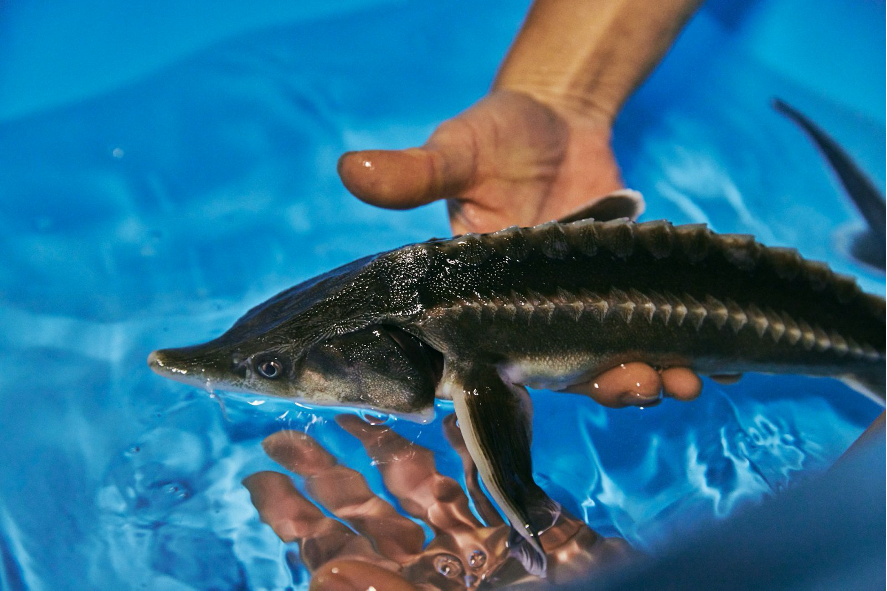
In the Oku-Ise region, the company Sturgeon Lohas raises sturgeons in the clear waters of the Hajikami River. ‘The river water has the same pH as the sturgeon’s body fluids. It’s an incredibly favorable environment,’ says their representative Ryo Tsuji. The company applies techniques from bluefin tuna farming.
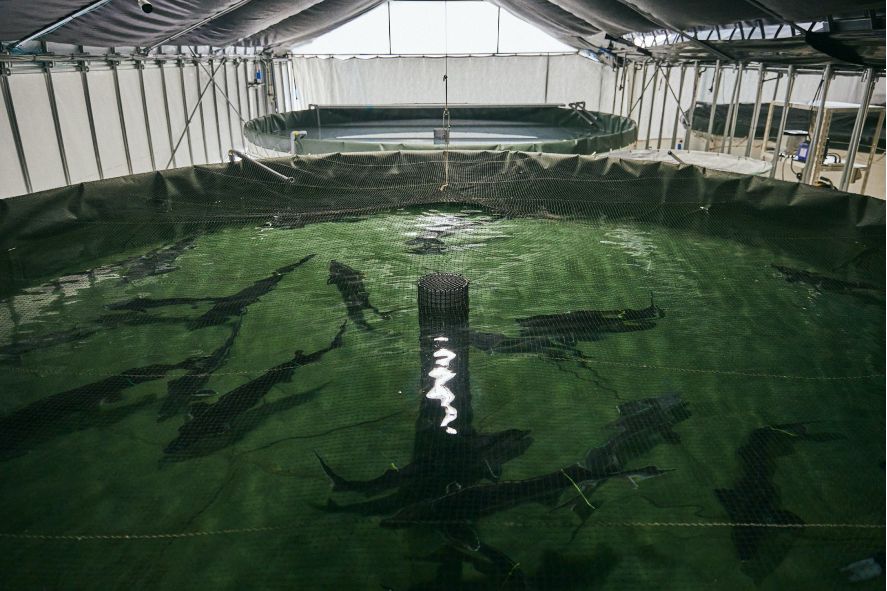
The large sturgeon eggs are selected and marketed as ‘Oku-Ise caviar’. Their flesh, rich in collagen and with a delicate taste, can be used in a variety of dishes, including sashimi.
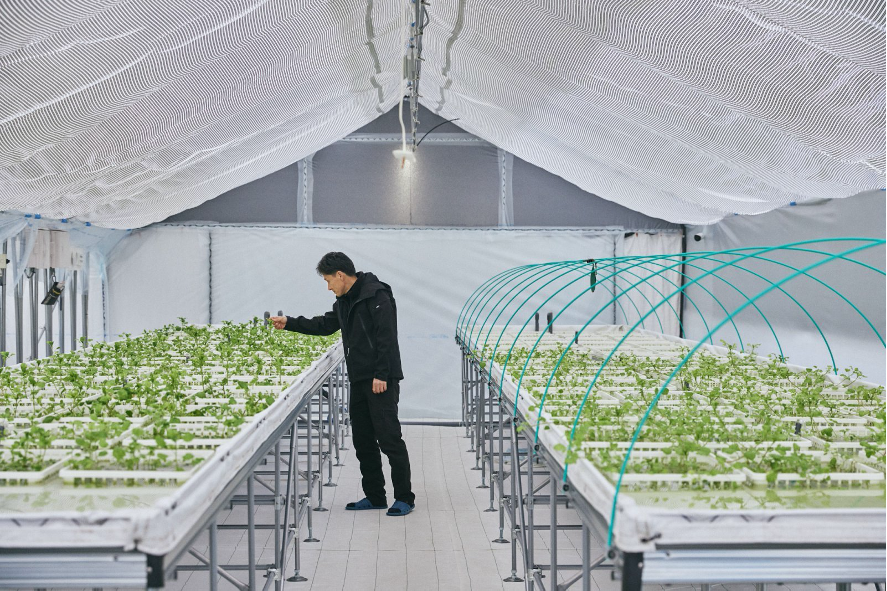
Right next to the fish farm, they grow organic watercress. They introduced aquaponics, where the water used to raise the sturgeons is recycled through hydroponic cultivation. They are thus pursuing a sustainable business.
In terms of food, Mie is considered a treasure trove of delicious ingredients. Leading the marine products is the Ise langoustine, with a fishing volume ranking among the top nationwide. Along Mie’s long coastline, there is also ama diving, where female free divers collect seafood, and abalone is a local specialty. Among agricultural products, Matsusaka beef stands out. Considered one of Japan’s three major Wagyu beef varieties, it is sometimes even called a work of art.
In addition to the richness of these ingredients, a new initiative has been launched in the mountains of Oku-Ise: land-based sturgeon aquaculture. Sturgeon Lohas is committed to environmentally friendly production with a next-generation circular system.
In 2021, the MIKURA Vinegary brewery opened a new store next to its brewery, showcasing products made using a fermentation method in wooden barrels according to traditional techniques. They thus highlight the quality of fermented products in the delicious flavor of vinegar, which took time to make.
Mie is a region worth recognizing both as a tourist destination and for its local products made with solid techniques. Here, production is contemporary yet respects tradition. The artisans, always ready to take on challenges, are the strongest supporters of historic industries.
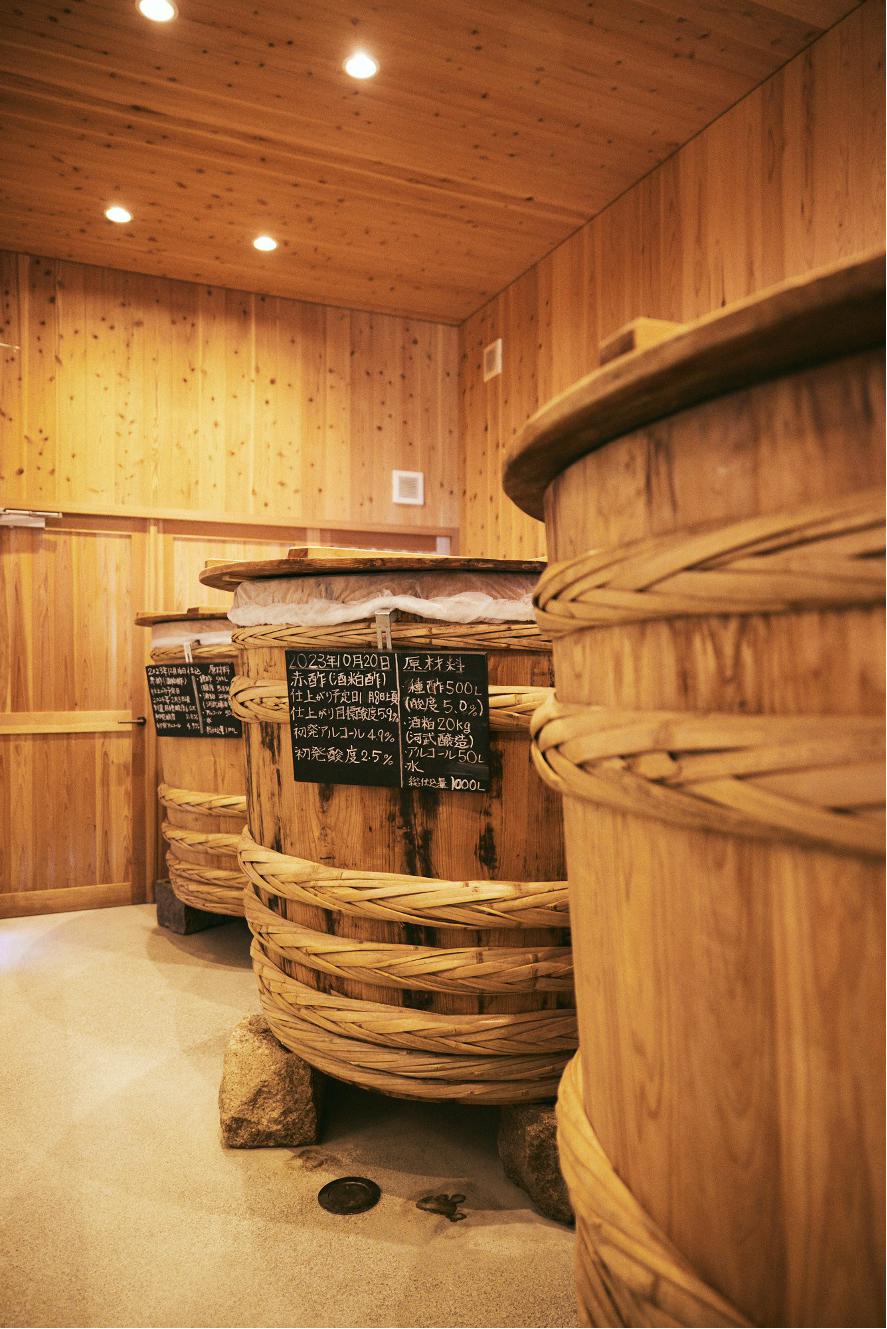
The MIKURA Vinegary outlet, located in the commercial and leisure base VISON in Taki, has an adjoining shop to its brewery. Visitors can observe the manufacturing and fermentation rooms from the store. It’s possible to taste all the products in the store, and light snacks such as vinegar ice cream are also available for sale.
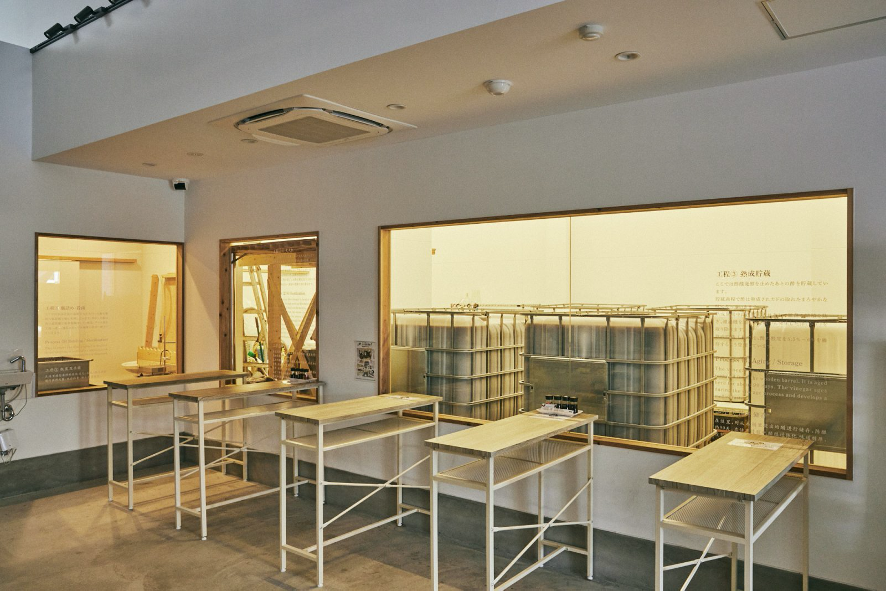
In the fermentation room, red vinegar made from sake lees and black vinegar made from brown rice sake are brewed in wooden barrels. They undergo natural static fermentation for about 70 days, followed by a maturation period, before being marketed. The product range is varied, including, for example, a series of vinegars blended with fruit juice.
‘We want as many people as possible to discover the delicious flavor of the vinegar we have carefully made,’ says its director, Shino Ito.
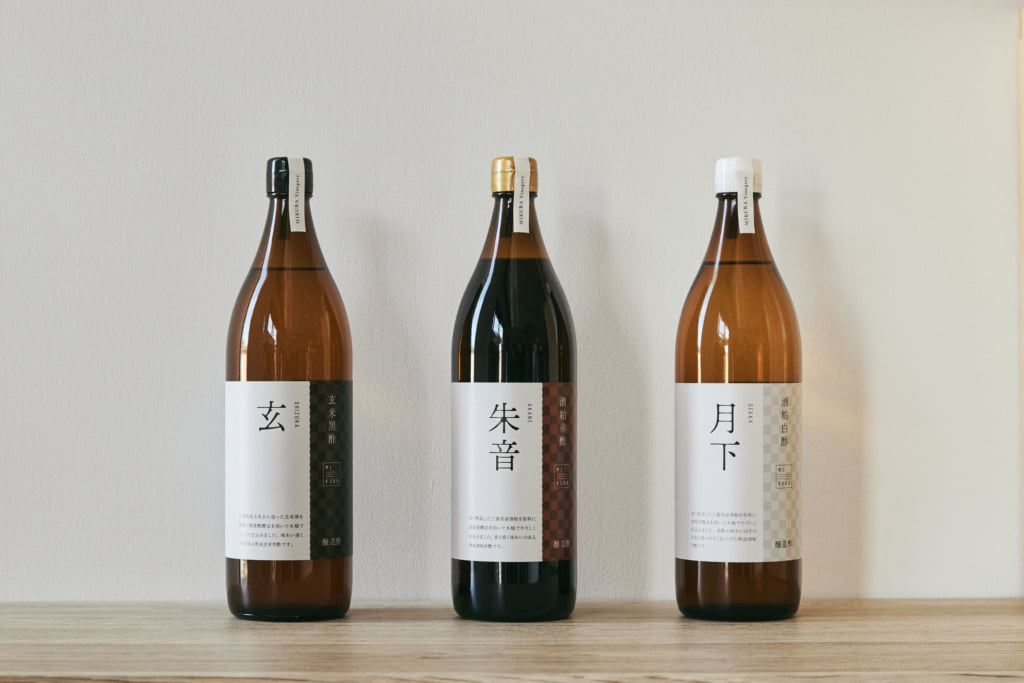
TRENDING
-
Ishiuchi Miyako, A Singular Perspective on Women
Recipient of the 2024 Women in Motion Award, the photographer creates intimate portraits of women through the objects they left behind.

-
Recipe for Ichiraku Ramen from ‘Naruto’ by Danielle Baghernejad
Taken from the popular manga with the character of the same name who loves ramen, this dish is named after the hero's favourite restaurant.

-
Namio Harukawa, Master of Japanese SM Art
'Garden of Domina' offers a dive into the world of an icon of ‘oshiri’, whose work has now reached a global audience.

-
The Tattoos that Marked the Criminals of the Edo Period
Traditional tattoos were strong signifiers; murderers had head tattoos, while theft might result in an arm tattoo.

-
The Emperor of Japanese Porn is Now the Star of a Netflix Series
Deliciously funny, The Naked Director especially succeeds in reviving the atmosphere that was so characteristic of 1980s Japan.





